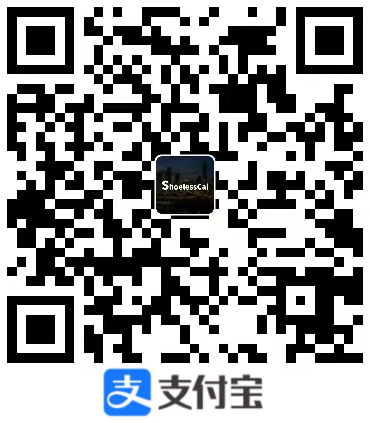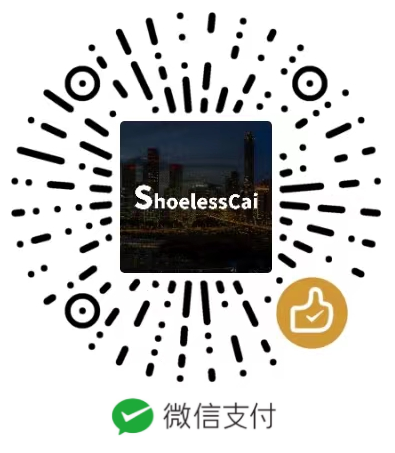
封面故事:A customer exits the Apple Inc. store on Nanjing East Road in Shanghai, China, on Wednesday, Oct. 2, 2024. Photographer: Qilai Shen/Bloomberg
彭博推送 | 2024年,十一黄金周,金融市场发生了什么?
译文
彭博记者,于新加坡报导。
中国的黄金周真的是金灿灿,国内投资人很可能在一波刺激之后庆祝,这些刺激使得市场咆哮了。中国大陆股票最终盘情况,以牛市收尾。
假期期间,旅游人数激增,使得这件事成为关键指标,关于世界第二大经济体的消费支出问题。今年额外显著,同时,经济学家和交易员翘首期盼中国国家领导人最近的一些短期的刺激政策,能够重新点燃正在失去信心的消费者。
stimulus blitz 刺激闪电战
其实经济复苏有早期现象。随着城市逐渐放宽家庭消费的标准,人们立刻鱼贯而入到展示厅,即便是午夜的时候。
旅游预订数据显示,更多中国人将欧洲、亚洲作为旅行目的地,例如日本、马来西亚,相较于去年,甚至是疫情之前的情况。国内旅游预定情况,国内 铁路网络,在长假首日见证了一系列的乘客。意指乘客多。
国有媒体,大肆宣扬长假旅行支出的数据。几乎每天,报纸头条都含有“记录”、“超过”等字样,还会跳出些新闻,从央视新闻到新华社都有,强调假期期间更少的电影票房,铁路拥堵,以及自驾游。
hype up the holiday 大肆宣扬假期
road trip 自驾游
我们不会全面地关注中国长假支出,至少下周之前还不会关注。针对目前的乐观主义很可能持续,中国需要通过刺激政策来紧跟步伐,紧跟其自己宣称的步伐 —— 很可能还有更多。亿万富翁投资人,Ray 说到,政策制定者必须做到“任何该做到的”,来找到返回的方法。
那样的世界很可能要求主要财政刺激(fiscal firepower)—— 这些能推动刺激进入“火箭筒”。一旦被释放。24 名政治局精英,敦促官方来印发(其自身的),以及更好地利用超长统治债券,当地特殊债券,以引导投资人,而非使用特权,点燃投机,认为财政方式会增加。
bazooka 火箭筒
Politburo 政治局
Jia Kang, 为一家隶属于财政部的研究机构的领导,说到国家还有空间,去获取财政支持,以支持经济,通过印发尽可能多的 10 万亿人民币的 特殊债券。
to ramp up fiscal support 获取财政支持
那个世界许多次都是万亿元超长期的主权债券,政府计划今年出售这些债券。因此,他说到,很可能比 2008 年的时候,会有相应比例的提升,2008 年时候,政府提出 4 万亿元的刺激政策,鉴于中国 GDP 在名义上于 2023 年年底的时候,翻了 4 倍。
quadrupled 四倍
一项有意义的集会开启,鉴于 H 股上市的中国股票于 周四的时候停止交易,交易员们再看到 9 月份以来,这只股票涨了 30% 之后,过了一会就汇报这件事情。我们始终见证了,是否下跌只是简短的挫折。
dip 下跌
这个十一黄金周很多事情都非常关键。现在的情况,是否会造成假期太惬意,而无法刺激消费者消费,这件事本身也提出新的问题,那什么能够刺激消费呢?
离得远一些
中国决定在关键领域自给自足,比如电动汽车行业、半导体行业、以及高级的硬件,即便这意味着牺牲掉获得最好芯片,来支撑起当地公司。
北京方面,鼓励中国技术公司,购买更多当地产品,AI 芯片,而不是从英伟达那里购买,这些被认为是最佳的用来训练模型的。这一举措,瞄准了加强国内选择,例如 HUAWEI,以及 Cambricon Technologies。彭博新闻报导。
政策作为引导,而非彻底禁止,随着北京试图避免增加紧张感,和美国的紧张感,以及伤及其自身的 AI 发展情况。
outright ban 彻底禁止
更一般地,这一项举措和中国的努力联系在一起,很快增强了国内芯片生产,以及减少了对于国外技术的依赖,特别地,在一项由美国引导的活动之中,来限制其触达最高精尖的半导体和设备。
高盛分析师评估,中国的半导体生产,将达到整个国家芯片需求量的 40%,于 2030 年的时候,2022 年这个数据是 16%。尽管,大多数人们关注成熟且关键节点的产量增长,因为技术限制。
HUAWEI 出版 MATE 60 PRO 5G 耳机,去年可是一项突破性进展,也是一项自给自足的做法。电话发展,以先进的当地制造为特征,整个过程由这家公司帮助完成,公司为在上海的国际半导体制造有限公司,显示了中国公司能持续创新,尽管限制也是增长的。
另外,MATE 60 PRO 耳机的 50% 关键零件,来自中国供应商,2019 年出版的 MATE 30 系列,中国供应商占据 40% 以下,依据 Yole 集团数据。
早些年,中国官方告诉当地环保车制造商,大量提升其购买国内的自动化芯片制造商的芯片。
这对于其他国家是有暗示的:欧盟警告,这是芯片制造商,包括 NXP 半导体 NV,可能失去中国市场。拜登政府也关注潜在的供给过剩问题,主要来自中国的芯片产量扩张,削减了关于 50% 的关税,关于中国半导体进口。
然而,这项飞机推迟起飞只会增强中国继续取代外国技术进口的决心。
pushback 飞机推迟起飞
resolve to 增强决心
中国方面强调,今年 6 月的国家科学会议,说到几项核心技术的命脉,仍然握在其他国家手中,中国面临顶级科学技术人才的短缺。
“我们需要聚集创新,以及获取科学竞争领域的高地,以及未来的发展。”中国领导人说到。
原文
Hi, this is Yanping Li in Singapore.
This Golden Week holiday in China is indeed quite golden. Domestic investors are likely celebrating after stimulus sent markets roaring. Mainland stocks closed out the final trading day in a bull market.
The holiday season typically sees a surge in Chinese travelers, making it a key indicator of consumer spending in the world’s second-biggest economy. This has taken on extra significance this year, with economists and traders looking to see if President Xi Jinping’s latest stimulus blitz can reinvigorate the country’s downcast consumers.
There are some very early signs of recovery. As soon as cities relaxed homebuying rules, people quickly flocked to showrooms — even in the middle of the night.
Travel booking data shows more Chinese are headed to Europe and Asian destinations like Japan and Malaysia compared to last year and even before the Covid-19 pandemic. Domestic travel is also booming, with the national rail network seeing a record number of passenger trips on the first day of the holiday.
State media are hyping up the holiday spending data. Almost daily, headlines with words like “record” or “exceed” would pop up on news apps from China Central Television and Xinhua News Agency, highlighting figures such as nationwide cinema ticket sales, railway traffic, and road trips.
We won’t have a complete view of China’s holiday spending until next week at least. For the current optimism to last, Beijing will need to follow through on the stimulus measures it has announced — and possibly even more. Billionaire investor Ray Dalio said policymakers must do “whatever it takes” to bring about a turnaround.
That would likely require major fiscal firepower — something that could push stimulus into “bazooka” territory, if unleashed. The elite 24-man Politburo has urged officials to issue and better utilize ultra-long special sovereign bonds and local special notes to drive investment without giving specifics, fueling speculation on the strength of the fiscal measures.
Jia Kang, a former head of a research institute affiliated with the Ministry of Finance, said the country has room to ramp up fiscal support for the economy by issuing as much as 10 trillion yuan ($1.4 trillion) in special debt.
That would be many times the 1 trillion yuan in ultra-long special sovereign bonds the government planned to sell this year. But he said that would be a proportional increase from the 4 trillion yuan stimulus package in 2008, given China’s gross domestic product had quadrupled in nominal terms by the end of 2023.
As a historic rally in Hong Kong-listed Chinese stocks paused on Thursday, with traders taking a moment to reflect after a more than 30% surge since early September, it remains to be seen whether the dip is just a brief setback.
Much is at stake this Golden Week. If the conditions leading into the holiday were so favorable and yet failed to boost consumer spending, it would raise the question what could?
Stay Away
China is determined to become self-sufficient in key areas like electric vehicle semiconductors and advanced hardware, even if it means sacrificing access to the best chips to support its local companies.
Beijing is encouraging Chinese tech companies to buy more locally produced AI chips instead of those from Nvidia, which are considered the best for training algorithms. This move aims to strengthen domestic alternatives like Huawei and Cambricon Technologies, Bloomberg News reported.
The policy serves as guidance rather than an outright ban as Beijing seeks to avoid escalating tensions with the US and hurting its own AI tech development.
Broadly, the move aligns with China’s efforts to quickly boost domestic chip production and reduce reliance on foreign technology, especially amid a growing US-led campaign to restrict its access to the most sophisticated semiconductors and equipment.
Goldman Sachs analysts estimate that the value of semiconductor production by Chinese companies will reach 40% of the country’s chip demand by 2030, up from 16% in 2022, though most of the capacity expansion will be focused on mature nodes due to technology constraints.
Huawei’s release of Mate 60 Pro 5G handset last year was a major breakthrough in China’s self-sufficiency drive. The phone’s development, featuring an advanced locally-made processor with help from Shanghai-based Semiconductor Manufacturing International Corp., demonstrated that Chinese companies can continue to innovate despite growing restrictions.
Additionally, 50% of the critical components in the Mate 60 Pro handset came from Chinese suppliers, an increase from less than 40% for the Mate 30 Pro in 2019, according to research firm Yole Group.
Earlier this year, Chinese officials told local EV makers to sharply increase their purchases from domestic auto chipmakers.
This has implications for other countries: the European Union has warned that its chipmakers, including NXP Semiconductors NV, may lose market share in China. And the Biden administration is so concerned about potential oversupply from China’s chip capacity expansion that it has slapped 50% tariffs on Chinese semiconductor imports.
However, this pushback will only strengthen China’s resolve to keep replacing foreign technology imports.
China emphasized this at a national science conference in June, saying some core technologies are still controlled by others and that China faces a shortage of top scientific and technological talent.
“We need to ramp up our innovation and claim the high ground in technological competition and future development,’’ the Chinese leader said.
原文链接
长按/扫码,有您的支持,我们会更加努力!


|
